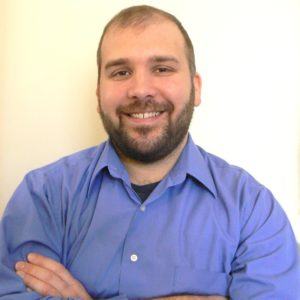Dr. John McCorvy is a molecular pharmacologist and an Assistant Professor at the Medical College of Wisconsin. He studies G Protein-Coupled Receptors (GCPRs) and their functional selectivity, which refers to the differential signaling pathways activated by various drugs at a specific receptor. Dr. McCorvy investigates this phenomenon exhibited by psychedelic, antipsychotic, and antidepressant drugs to inform the development of safer pharmaceuticals that avoid undesired side effects.
Dr. McCorvy completed his postdoctoral research in pharmacology with the Roth Lab at the University of North Carolina Chapel Hill in 2018. While there, he helped to identify the crystal structure of LSD bound to 5-HT2B, a human serotonin receptor.1 He was also the lead author on a 2018 paper exploring biased signaling in 5-HT2B.2 Psychedelic Science Review covered both studies in a March 2020 article about the 5-HT2B receptor. The 2018 paper also earned coverage in Futurity, where McCorvy explained that “Basically, by crystalizing the structures of 5-HT2B bound to several common drugs, we found there’s no one mechanism by which the receptor is activated. There are several.”
In 2012, Dr. McCorvy earned his PhD in medicinal chemistry and molecular pharmacology at Purdue University. His dissertation explored how various classes of psychedelic compounds interact with the human serotonin 5-HT2A receptor.3 He received his Bachelor degree in biochemistry and psychology from Texas Tech University in 2005.
His research with Adam Halberstadt’s lab built evidence for 1-acyl-substituted lysergamides ALD-52, 1P-LSD, and 1B-LSD as prodrugs of LSD.4 Collaborating with other psychedelic researchers including Halberstadt and Dr. Adam Klein, Dr. McCorvy has helped discover some pharmacological properties of psilocybin derivatives.5 Together with Dr. Alexander Sherwood, they synthesized the magic mushroom compounds norbaeocystin, baeocystin, norpsilocin, and aeruginascin.6 Dr. McCorvy also supported Lindsay Cameron’s team at the Olson Lab in the synthesis and testing of tabernanthalog, a non-hallucinogenic form of ibogaine.7 In 2015, he authored a review paper with Dr. Bryan Roth on the structure and function of GPCRs.8
In February 2021, COMPASS Pathways announced that Dr. McCorvy’s lab joined the COMPASS Discovery Center, a collaboration established in summer 2020 between COMPASS Pathways and Jason Wallach’s lab at the University of the Sciences. The expansion also included Dr. Adam Halberstadt’s lab at the University of California San Diego.
Dr. McCorvy serves as a senior advisor for the biotechnology pharmaceutical company Bright Minds, which developed precisely targeted serotonergic drugs.
He was a panelist on the 2020 Wisconsin BioHealth Summit panel, “Psychedelic Therapeutics and Transforming the Future of Mental Health Care, and presented his research at the 2019 International Forum on Consciousness. A video of his talk at IFC is shared by the BioPharmaceutical Technology Center Institute (BCTI).
More information on Dr. McCorvy’s work is found on his ResearchGate profile.
